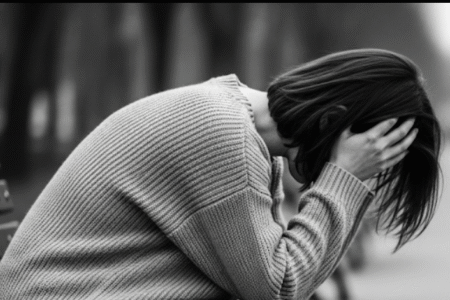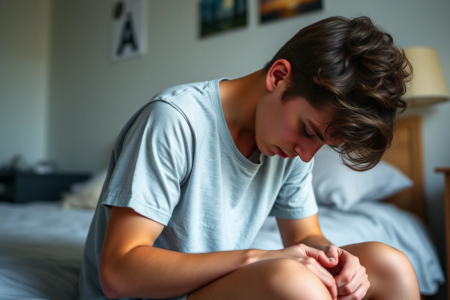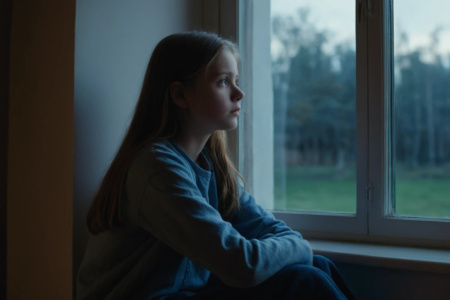Mental illness is one of the most misunderstood and overlooked health issues in society today. Despite growing conversations around mental health, many people still shy away from discussing their struggles, fearing judgment or misunderstanding. In a world that often prioritizes physical health and outward success, the inner battles people face remain hidden. But the truth is, mental health is just as important as physical health, and it’s time we break the silence surrounding it. Mental illness refers to a range of mental health conditions that affect mood, thinking, and behavior. These include common disorders like depression and anxiety, as well as more complex conditions such as bipolar disorder, schizophrenia, and post-traumatic stress disorder (PTSD). Each individual’s experience with mental illness is unique, with some needing short-term support, while others may require lifelong care and understanding. What’s important to remember is that mental illness is not a choice, a phase, or a weakness — it is a legitimate health condition that deserves compassion and proper treatment. The need to address mental health has never been more urgent. According to the World Health Organization, one in every eight people globally is living with a mental disorder. This number has been rising steadily, especially in the aftermath of the COVID-19 pandemic, which brought with it a wave of anxiety, loneliness, and emotional exhaustion. Children, teenagers, working professionals, and even the elderly — no age group has been spared. Unfortunately, even with such alarming statistics, awareness and access to help remain limited, and societal stigma continues to silence those who need support the most. Recognizing the signs of mental illness is the first step toward healing. Warning signs can include persistent sadness, withdrawal from social activities, drastic mood changes, sleep disturbances, overwhelming anxiety or fear, and trouble concentrating. In more serious cases, individuals may even experience thoughts of self-harm or suicide. These signs should never be ignored or brushed aside as “just a bad day” or “attention-seeking.” Just like we rush to help someone with a physical injury, the same urgency must apply to mental health crises. Perhaps the most harmful myth is that mental illness reflects personal weakness or failure. Nothing could be further from the truth. Mental health conditions often arise due to a complex mix of genetics, environmental factors, trauma, and brain chemistry. No one chooses to struggle, just like no one chooses to fall physically ill. What people battling mental illness need is not pity or advice, but empathy, understanding, and support. They need safe spaces to open up without fear of being judged. Mental illness doesn’t always look the way we expect it to. Sometimes it wears a smile in public and cries behind closed doors. It can be hidden in high achievers, busy parents, quiet teenagers, or even the friend who’s always making everyone laugh. This invisibility is what makes awareness so crucial because people often suffer in silence, even when surrounded by others. In the next part of this series, we’ll uncover how these hidden struggles manifest, the different forms they take, and why understanding them is key to creating a more compassionate and mentally healthy society. As we begin to peel back the layers of what mental illness truly means, one thing becomes clear — there’s so much more beneath the surface. Why do certain disorders go undiagnosed for years? What roles do culture, upbringing, and media play in shaping our beliefs about mental health? And most importantly, what does healing really look like in today’s fast-paced, hyperconnected world? In Part 2, we’ll dive deeper into the types of mental illnesses, how they silently affect daily life, and why seeking help is both brave and necessary. Stay with us — the conversation is just getting started. For more interesting content, keep reading FORAMZ.
In the previous part of this, we discussed the psychological wounds that are left on teenagers due to bullying and abuse. The silent battle victims fight every day, the scars unseen by the world. But awareness alone is not enough we need action. It’s time to shift from identifying the problem to finding real solutions that can heal and protect teenagers from abuse. Creating a Safe Space: The Power of Open Conversations Silence is an abuser’s greatest ally. Many teenagers suffer in silence, fearing judgment, retaliation, or disbelief. We must break this silence by creating environments where they feel safe to share their struggles. Strengthening the Shield: Building Confidence One of the most effective ways to prevent and combat teenage abuse is by empowering victims. Strengthening their self-worth and confidence can make them less susceptible to emotional breakdowns caused by bullying. Enforcing Accountability: Holding Bullies & Abusers Responsible Stopping teenage abuse requires firm actions against those who perpetrate it. Many bullies continue because they face no real consequences. Healing the Wounds: Support & Therapy Victims of abuse often suffer long-term emotional distress. The healing process requires professional and personal support. Uniting as a Society: The Role of Parents, Schools, & Communities Ending teenage abuse isn’t an individual fight—it’s a collective responsibility. When parents, teachers, schools, and communities work together, real change happens. The Path Forward Teenage abuse can no longer be an unspoken issue. Every effort counts from the smallest conversation to policy changes at a national level. Parents, teachers, peers, and society must come together to create a world where every teenager feels safe, heard, and valued. In the next part of this, we will explore real-life stories of survivors stories of strength and victory. Because no matter how dark the tunnel is, there is always light at the end of it. The battle against teenage abuse is not just about fighting the bullies it’s about healing the victims and building a future where no teenager suffers in silence. Keep reading Foramz for your daily dose of moral support.
In the first part of this series, we introduced the silent epidemic of teenage bullying and abuse, the wounds that go unnoticed, the unheard cries. Now, let’s take a closer look at the hidden turmoil victims endure and the psychological battle they fight every day. Behind the Mask: The Hidden Struggles of a Victim Imagine walking through the school corridors, dreading every step, knowing the turn could bring a new torment. For many teenagers, this is not just a fear, it’s their reality. Every word, every stare, and every whisper feels like a dagger, slowly cutting away at their self-esteem. They wear a mask of normalcy, laughing at jokes, nodding in class, and smiling at home. But behind that mask, there’s pain, anxiety, and a deep sense of loneliness. Bullying doesn’t always happen in obvious ways. A group of classmates laughing while looking at their phones could mean that another cruel joke has been made at someone’s expense. A sudden silence when a particular student walks into the room may signal exclusion. A teenager sitting alone at lunch, eyes fixed on their untouched tray, may not be hungry but rather too broken to eat. The Psychological Wounds: A Battle No One Sees Unlike a visible injury, the wounds of bullying and abuse run deeper, affecting the very core of a victim’s mental well-being. These emotional scars manifest in various ways: For some, these emotions spiral into more dangerous territories—self-harm, substance abuse, or even suicidal thoughts. What begins as “harmless teasing” can evolve into a psychological war with devastating consequences. The Role of Technology: A New Age of Abuse In today’s digital world, bullying doesn’t end at the school gates. It follows teenagers home through social media, messaging apps, and online platforms. Cyberbullying has given tormentors a new, faceless weapon one that never lets the victim escape. A single humiliating post, an edited picture, or a cruel message can spread within seconds, making a teenager’s life unbearable. The internet, which should be a space of learning and connection, becomes a nightmare where abuse is 24/7, leaving no safe space for escape. Breaking the Silence: The First Step to Healing The most dangerous part of abuse is the silence it enforces. But change begins with awareness. Here’s how we can support victims and take the first steps toward healing: What’s Next? In the next part of this series, we will explore how parents, teachers, and peers can become pillars of support. We will also discuss strategies for rebuilding the self-worth of victims and creating a future where no teenager has to suffer in silence. The fight against teenage abuse is not just about identifying the problem, it’s about taking action. Together, we can ensure the voice doesn’t go unheard and no cry is left unanswered. Keep reading foramz for your daily dose of emotional support,
Imagine feeling so invisible, so lost, that you begin to question if anyone would even notice if you were gone. For 16-year-old Maya, this was her everyday reality. The constant pressure from school, the overwhelming loneliness, and the haunting feeling of being trapped each day felt like a silent battle. Maya had always been the quiet, creative type, but behind her calm demeanor was a storm she didn’t know how to fight. The pressure from school was suffocating. Her grades were falling, her friends seemed to be moving on with their lives, and her family’s expectations felt like an impossible mountain to climb. Every day, she felt like she was losing herself just a little bit more. It wasn’t just about school. It was the loneliness—the kind of loneliness that doesn’t go away even when you’re surrounded by people. Maya couldn’t talk to her friends because she didn’t know how to explain the suffocating sadness she was feeling. She didn’t want to burden her parents, who were already stressed with their own lives. So, Maya did what many teens do when they feel like no one’s listening: she bottled it all up. It wasn’t until one afternoon, when the weight of it all became too much, that Maya reached a breaking point. She found herself staring at the edge, considering whether it would just be easier to end the pain. The thoughts were loud, persistent, and terrifying. But then, something happened. It was a message. A simple “Hey, you good?” from her best friend, Riya. At first, Maya didn’t know how to respond. She hadn’t been answering calls or texts much, but for some reason, this one felt different. It wasn’t just a “Hey, what’s up?” it was a genuine check-in, an open door that Maya didn’t even realize she needed. Riya wasn’t trying to fix anything and wasn’t offering unsolicited advice. She didn’t even push Maya to talk. She just said, “I’m here for you. Whenever you’re ready to talk, I’ll listen.” A few days later, Maya finally took the first step. She reached out to her school counselor. It wasn’t easy. It took every ounce of courage she had left, but walking into that counselor’s office marked the beginning of her healing. That was the moment things began to shift for Maya. She didn’t open up right away, but that message planted a seed of hope. Someone cared. Someone noticed. Maybe it was worth sticking around to see what could happen next. Over time, therapy helped Maya untangle the mess in her mind. She learned coping mechanisms for the stress, the pressure, and the anxiety. It wasn’t a magic fix some days were still hard but she felt stronger. And through therapy, she discovered something that truly began to save her: her passion for painting. Painting had always been an escape, but Maya never thought of it as something she could rely on for healing. She started sketching again just little things at first, but they gave her a sense of peace. Over time, those little sketches turned into full paintings, each one more vibrant and expressive than the last. She painted her anger, her sadness, and eventually, her joy. Her canvas became a place where she could let it all out with no judgment, no expectations, just her, the brush, and the colors. Maya’s journey wasn’t perfect, but it was hers. She found hope in the smallest of things: a message from a friend, the courage to ask for help, and the power of self-expression through art. And now? Maya knows that even in the darkest times, there is a way back. She’s still learning, still healing, but she no longer feels trapped in a world where there’s no way out. To anyone reading this, remember this: You are never alone. There is always a way through, even when there isn’t. Whether it’s a friend reaching out or a counselor offering guidance sometimes, all it takes is a single step toward hope to change everything. If Maya could find light in the darkness, so can you. Keep reading foramz for your daily dose of emotional support.
If you’ve made it this far, you know the weight of what we’re talking about. Teenager suicide isn’t just another issue it’s a silent storm destroying lives before they even have a chance to bloom. And the scariest part? Most of us don’t see it coming. But here’s the thing: We can change that. We can be the difference between life and death for someone struggling. We can’t turn back time for those we’ve lost, but we can make sure fewer lives are stolen by this darkness. So let’s talk about the solutions not vague ideas, but real, actionable ways to help teens step away from the edge. Creating a Safe Space: Let Them Be Heard Imagine screaming in a room full of people, yet no one turns around. That’s how many struggling teens feel. They don’t need lectures, judgments, or forced positivity they need to be heard. So, the next time a teen opens up, listen listen. Let them talk without interrupting, without offering a quick fix. Sometimes, just having someone acknowledge their pain can be the first step toward healing. And if they’re silent? Pay attention to the unspoken words the withdrawn behavior, the forced smiles, and the sudden change in habits. A simple“Hey, I’ve noticed you’ve been feeling off lately. Do you want to talk?” can open a door they thought was locked forever. Redefining Success: More Than Just Grades For far too long, we’ve told our teens that their worth is measured in report cards and college acceptances. But is a straight-A report worth a life lost? Parents, teachers, and society need to rewrite the narrative. Success isn’t just about being top of the class it’s about happiness, balance, and self-worth. Instead of asking, “Why didn’t you score higher?” ask, “Are you happy with what you’re doing?” Encourage them to pursue what truly excites them, even if it’s not a traditional path. Let’s show them that life isn’t just about surviving under pressure it’s about living. Social Media Detox: Separating Real from Fake Social media isn’t the enemy, but the illusion of perfection it creates is. Teens need to understand that what they see online isn’t real it’s a filtered, polished version of reality. Encourage digital detoxes, set boundaries, and most importantly, teach them how to use social media without being used by it. Create conversations like: “Do you think their life is really that perfect?”“What do you love about yourself outside of what people see online?” Helping them build self-worth beyond likes and comments can break the toxic cycle of comparison. Breaking the Stigma Why is it normal to seek help for a broken arm but not a broken mind? Mental health should be a regular part of school curriculums, family discussions, and social conversations. We need to normalize therapy, teach coping strategies, and encourage open conversations without fear of judgment. Instead of dismissing their struggles with“It’s just a phase”, let’s say, “I’m here for you, and I believe what you’re feeling is real.” If a teen is hesitant about therapy, remind them: It’s not about being “weak” or “crazy.” It’s about understanding themselves better. And that is strength. Real Connection: Quality Over Quantity Hundreds of online friends mean nothing if there’s no one to turn to in real life. We need to teach teens the value of real connections the ones that exist beyond screens and text messages. Encourage family dinners without phones, weekend activities that don’t involve WiFi, and deep conversations that don’t start with,“How was school?” but instead, “What made you smile today?” Building real relationships ensures they have a support system strong enough to pull them back when they’re drowning. Encouraging Self-Expression Instead of pushing them toward conventional achievements, ask:“What makes you feel alive?” And then, let them do it without judgment. Sometimes, words fail. That’s why self-expression is crucial. Music, art, journaling, sports whatever allows them to pour out emotions without pressure. A teenager who has an outlet for their emotions is less likely to let them fester into self-destruction. Recognizing the Signs & Acting Fast Suicide rarely happens without warning it’s just that we often miss the signs. Some red flags to watch for: If you notice these signs, don’t wait. Ask directly: “Are you thinking about hurting yourself?” It’s a myth that talking about suicide plants the idea in someone’s head—on the contrary, it shows them they’re not alone. If they say yes, take it seriously. Remove access to anything dangerous, get professional help, and most importantly, remind them: “You are not alone. We’ll get through this together.” A Simple “I’m Here” Can Save a Life Sometimes, we overcomplicate things. But the truth is, even the smallest gestures can pull someone back from the edge. A message saying, “Thinking of you today,” a check-in call out of nowhere these are lifelines. You don’t need to have all the answers. You just need to show up. Be there. Because in the darkest moments, knowing someone cares can make all the difference. Hope is Stronger Than Darkness Teenage suicide isn’t an unsolvable problem. It’s preventable. But it starts with us choosing to see, choosing to listen, choosing to act. So, as you finish reading this, ask yourself:Who needs to hear “I’m here for you” today? Because sometimes, that’s all it takes to save a life. Keep reading Foramz for your daily dose of your moral support.
Do you remember being a teenager? Those years when everything felt like the end of the world, yet we had dreams as big as the sky? But for today’s teens, those dreams are often clouded by a darkness that most of us fail to see. This isn’t just about teenage rebellion or mood swings. It’s a silent cry for help that we, as a society, are not hearing loud enough. Let’s peel back the layers and talk about the problems raw, unfiltered, and heartbreaking. The Crushing Weight of Expectations Everywhere you look, a teenager is trying to live up to someone else’s expectations. Parents, schools, and society all want them to excel, to be perfect. “Why aren’t you getting A+ grades like Sharma Ji’s son?” “You need to get into a top college!” These are phrases many teens hear repeatedly. The result? A suffocating fear of failure. Imagine being 16 and feeling like you’ve let the world down because you didn’t top an exam. The pressure builds until unbearable, leaving with one haunting question: What’s the point? The Social Media Trap For teenagers, social media is more than just a platform it’s their world. A place where likes and comments determine self-worth, where everyone’s life seems perfect except their own. The constant comparison is like a dagger to their self-esteem. “She’s prettier,” “He’s more popular,” “Why can’t I look like that?” The curated perfection they scroll through daily makes them question their value. And let’s not forget cyberbullying a silent predator that attacks them in the safety of their bedrooms, making them feel isolated and unworthy. The Loneliness Epidemic In a world more connected than ever, why do so many teens feel so alone? Despite hundreds of virtual “friends,” many lack real emotional connections. They bottle up their feelings, thinking no one will understand or care. Sometimes, they even drop subtle hints, hoping someone will notice. But when those hints go unnoticed, the loneliness deepens. It’s a loneliness that whispers lies like, Nobody would miss me if I were gone. The Taboo Around Mental Health If a teen breaks a bone, everyone rushes to help. But if they’re battling depression or anxiety? Silence. Mental health is still a taboo, especially in many families. Teens are often dismissed with phrases like, “You’re just being dramatic,” or “It’s all in your head.” This invalidation pushes them further into their shells. They start believing that their struggles aren’t real or important enough to be addressed. And the stigma? It’s like carrying an invisible weight that gets heavier each day. The Identity Crisis Teenage years are a time of self-discovery, but for many, it’s a journey filled with confusion and pain. Questions about gender, and identity can lead to internal battles. For some, coming out or simply being themselves feels impossible in a world that can be cruel and judgmental. They fear rejection, bullying, or worse, abandonment by the people they love the most. This fear often spirals into self-loathing, leaving them trapped in their minds. The Unspoken Trauma Not all scars are visible. Many teens carry the burden of trauma abuse, neglect, and loss. These experiences shape their worldview, often leaving them feeling broken and unworthy. But here’s the thing about trauma: it doesn’t go away on its own. It festers, silently affecting their thoughts and actions. Some try to numb the pain through harmful behaviors, while others feel it’s easier to end the pain altogether. The Academic Overload Imagine waking up at 6 a.m., spending hours at school, then heading straight to tuition, only to come home and finish a pile of homework. For many teens, this is their daily reality. The constant cycle of studying, competing, and performing leaves no room for rest or joy. They feel like robots programmed to succeed, but at what cost? Their dreams? Their happiness? Their lives? The Fear of Judgment “Don’t cry. People will think you’re weak.” “Boys don’t get depressed.” “Girls are too emotional.” Society’s stereotypes and judgments make it nearly impossible for teens to express their feelings openly. They fear being labeled or misunderstood, so they hide their pain behind forced smiles and fake laughter. But behind closed doors, the weight of unspoken words becomes too heavy. The Misunderstanding of ‘Help’ Sometimes, when teens muster the courage to seek help, they’re met with misguided responses. “Just think positive.” “Go for a walk; you’ll feel better.” While well-intentioned, these statements trivialize their struggles. For a teen battling suicidal thoughts, these words feel like yet another reminder that nobody truly understands. A Silent Epidemic The scariest part? Many teens show no outward signs of distress. They laugh, they joke, and they go about their day, masking their pain so well that even their closest friends and family don’t suspect a thing. Until one day, they’re gone. And everyone is left wondering, How did we miss the signs? Dear reader, these are the harsh realities our teenagers face every day. Problems that are invisible to the naked eye but devastatingly real. It’s a silent epidemic that’s claiming lives, and the silence around it is deafening. As you finish reading this, take a moment to reflect. Think about the teens in your life. Are they okay? Truly okay? Because sometimes, the ones who say they’re fine are the ones who need us the most. Keep reading Foramz for your daily dose of your moral support.
We’ve all seen the statistics, the heartbreaking stories, and the increasing news coverage about teen suicide. But what does it mean when we talk about teenagers and suicide? We know it’s a crisis, but the true scale of it remains something we’re only beginning to understand. As a society, we’ve come to accept that adolescence can be a time of turmoil and confusion. But when it reaches a point where a young life feels like it’s no longer worth living, something deeper is at play. Imagine being a teenager today. Your life is seemingly full of opportunity, yet it’s also fraught with pressure. You’re expected to balance academic excellence, friendships, extracurriculars, and a constant barrage of social media updates. The weight of perfection is almost inescapable. And for some, it can feel overwhelming. But amid this chaos, we have to ask: What is pushing these young individuals to the edge? What has led them to believe that they have no other option but to end their pain? Before we look deeper into the issues surrounding teen suicide, it’s important to acknowledge one simple truth: teenagers are still discovering who they are and trying to figure out their place in the world. Their brains are still developing, and their emotional maturity may not yet be equipped to deal with the weight they experience daily. At times, it might feel like they’re riding an emotional rollercoaster, with no brakes to stop them from spiraling into a darkness they feel is inescapable. But the reality is, that the rise in teen suicides isn’t just a passing trend or a statistic we can ignore. It’s a red flag that we need to pay attention to because the lives of our young people depend on it. What makes this topic even more critical is the silence surrounding it. Many teens feel like they’re battling alone, either too embarrassed or afraid to reach out for help. We live in a world where asking for help can feel like admitting failure, and for some, it’s easier to carry that burden in silence. The isolation can become suffocating. As we take a step back, it’s crucial to recognize that the rising rates of suicide among teens are not simply a consequence of the pressures they face. There are deeper, more complex factors at play. In the upcoming parts of this article, we will peel back the layers and explore what’s really behind this silent epidemic. But for now, let’s pause and reflect on the world these young people live in. Teenagers are often told to be strong, to “just get over it” when things get tough. But what if strength isn’t measured by how well we can hide our pain, but by how we can face it head-on? What if we started teaching our youth that it’s okay to not be okay, it’s okay to ask for help, and that no one should ever feel they’re fighting alone? In the upcoming sections of this issue, we’ll take a closer look at the societal, emotional, and psychological factors that contribute to the rise in teen suicide. We’ll discuss the role of social media, academic pressure, family dynamics, and so much more. But before we do, take a moment to think about the teens in your life. Are we listening to them? Are we giving them the space to talk openly about their struggles? Stay tuned as we dive deeper into this topic— understanding the issue is the first step toward finding a solution. Keep reading foramz for your daily dose of emotional support.






